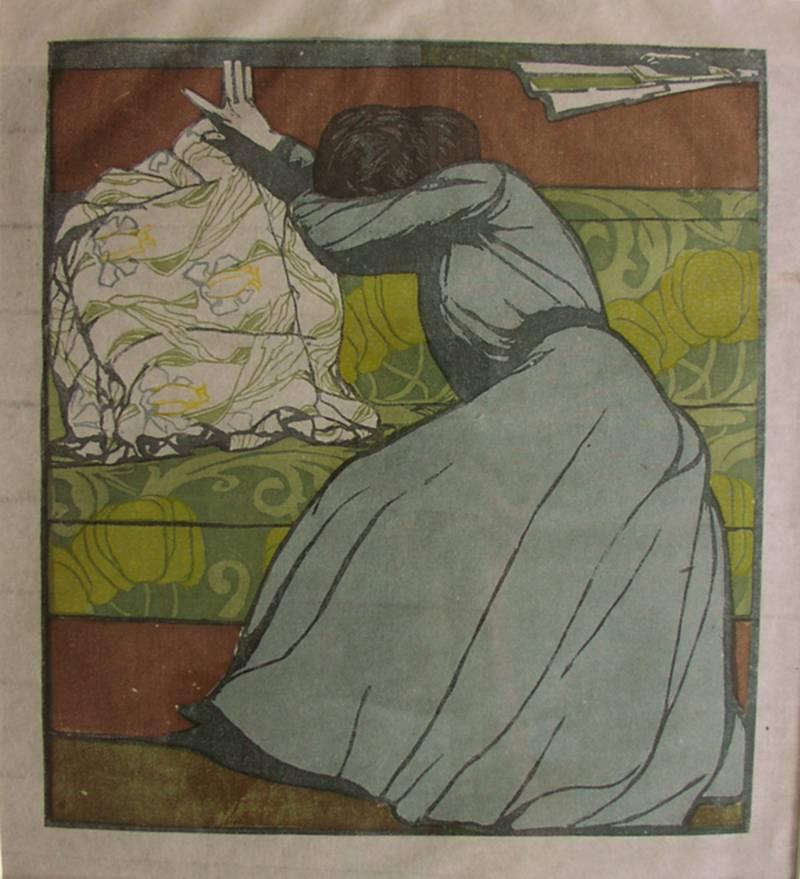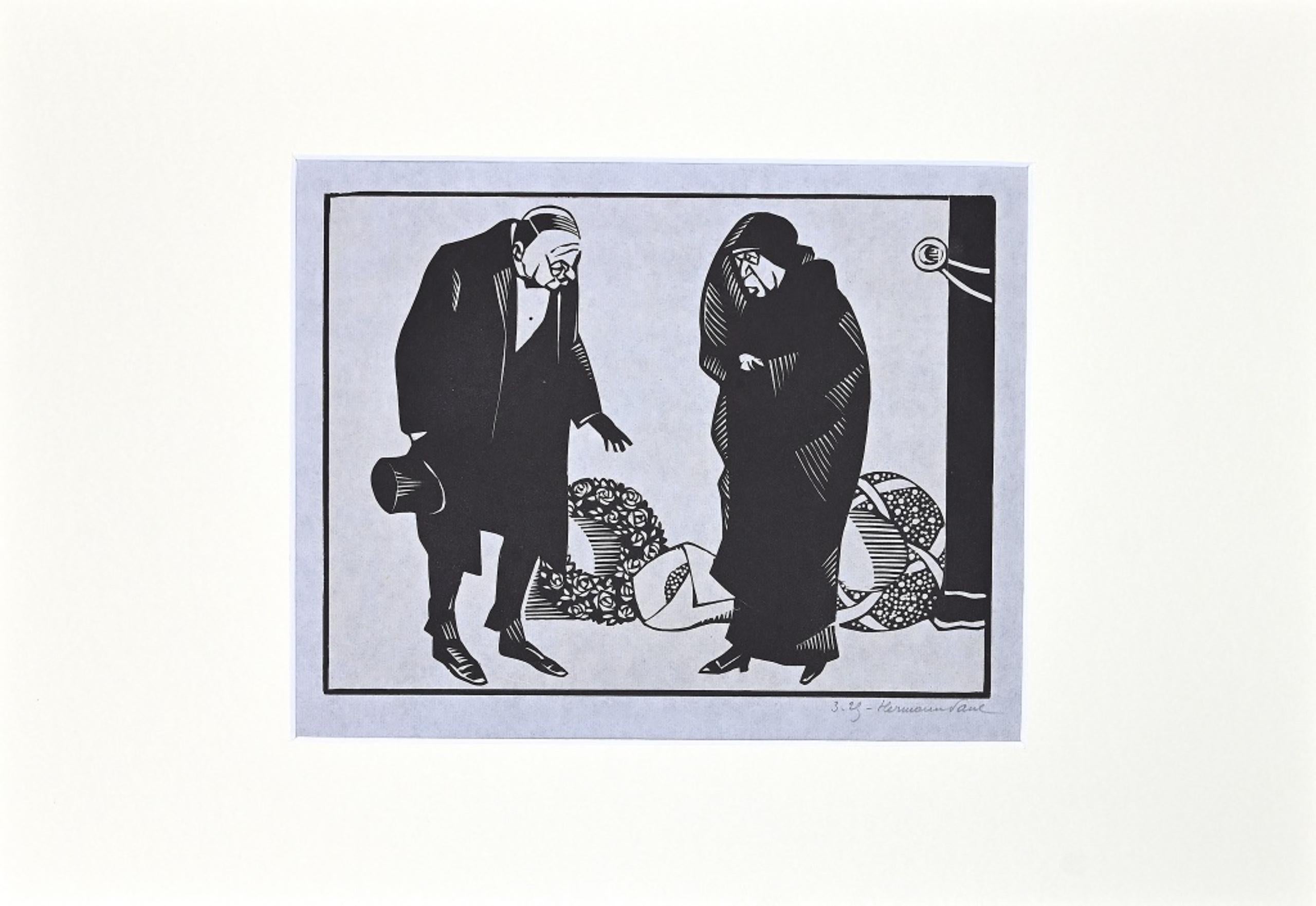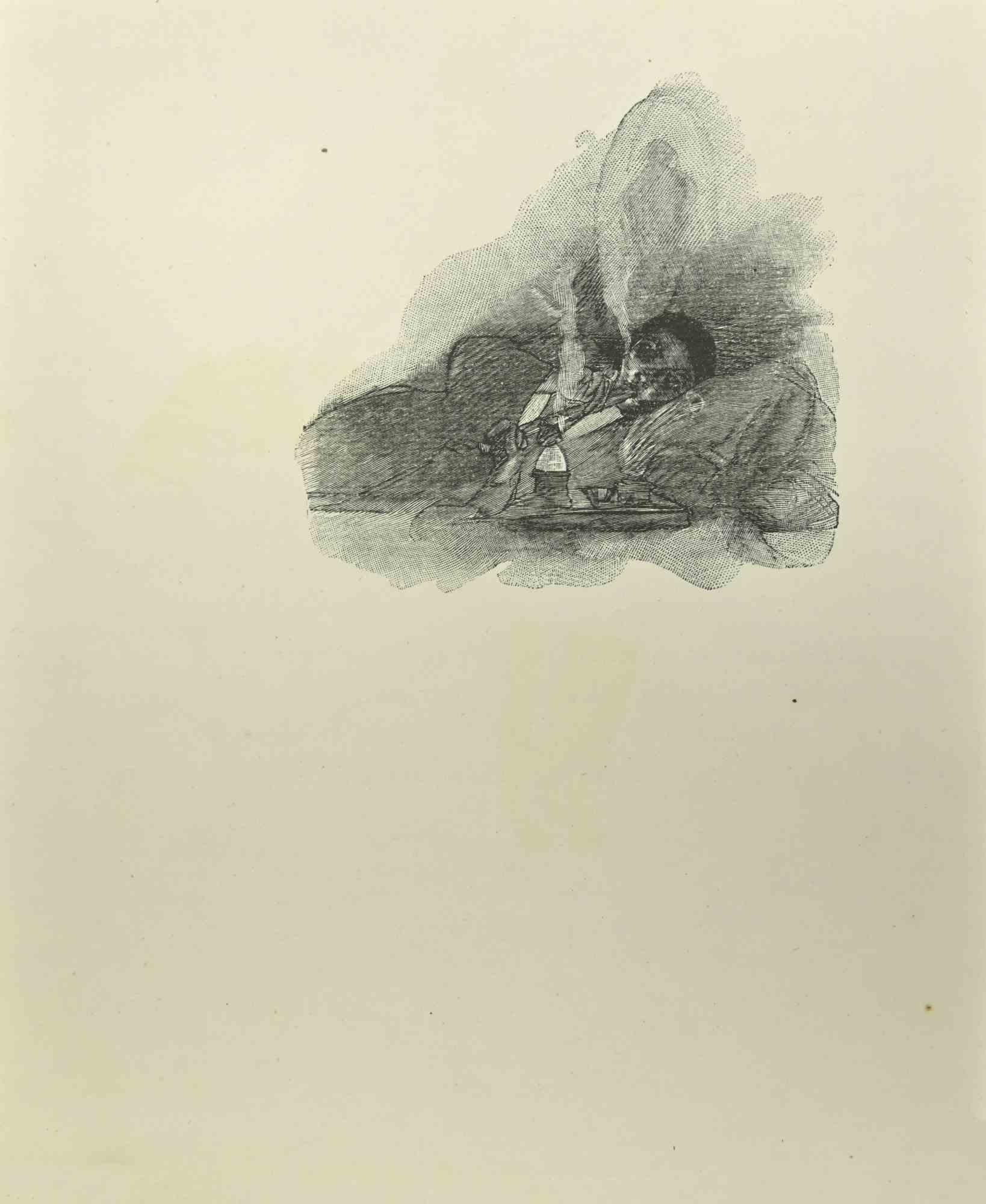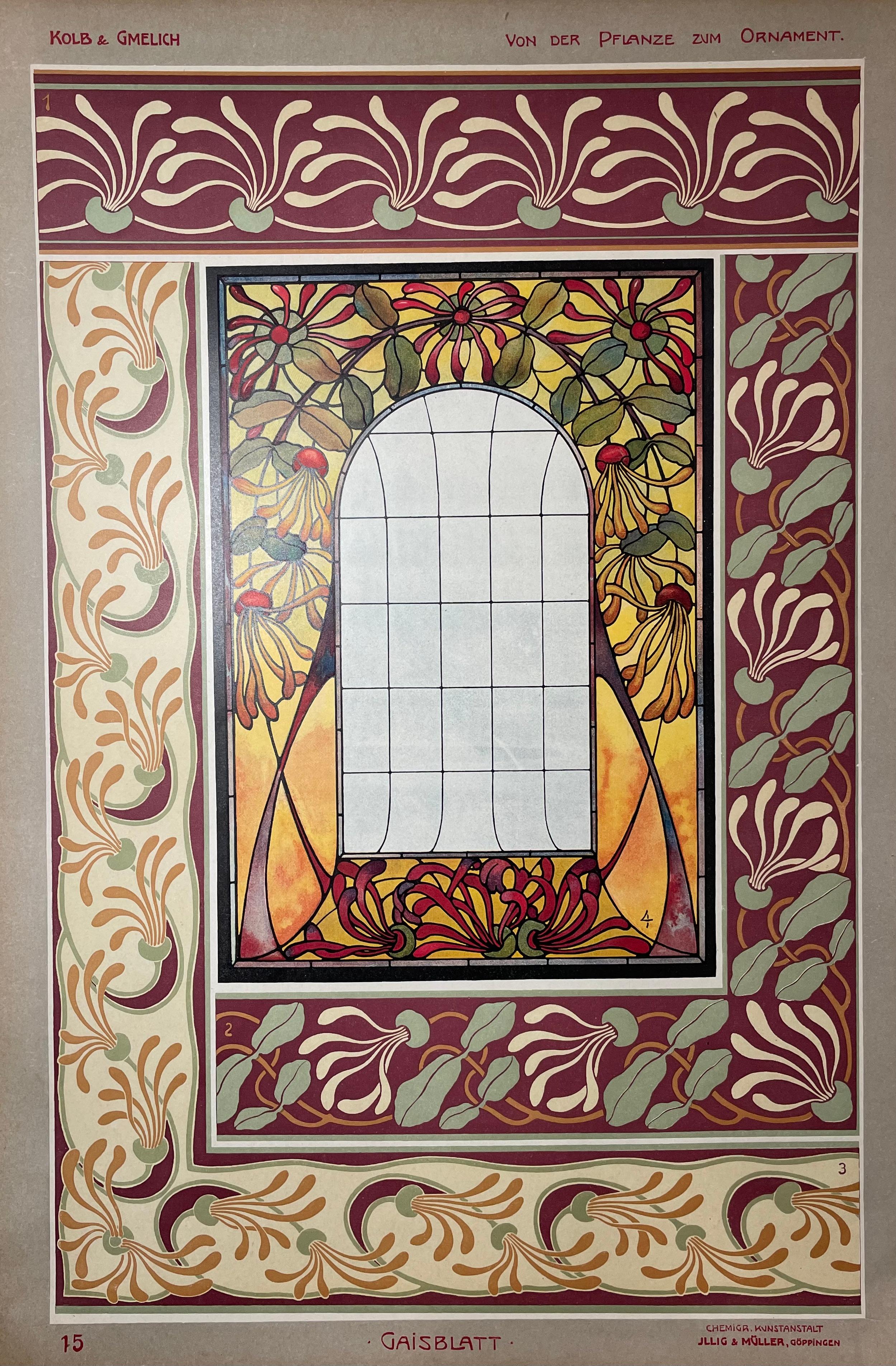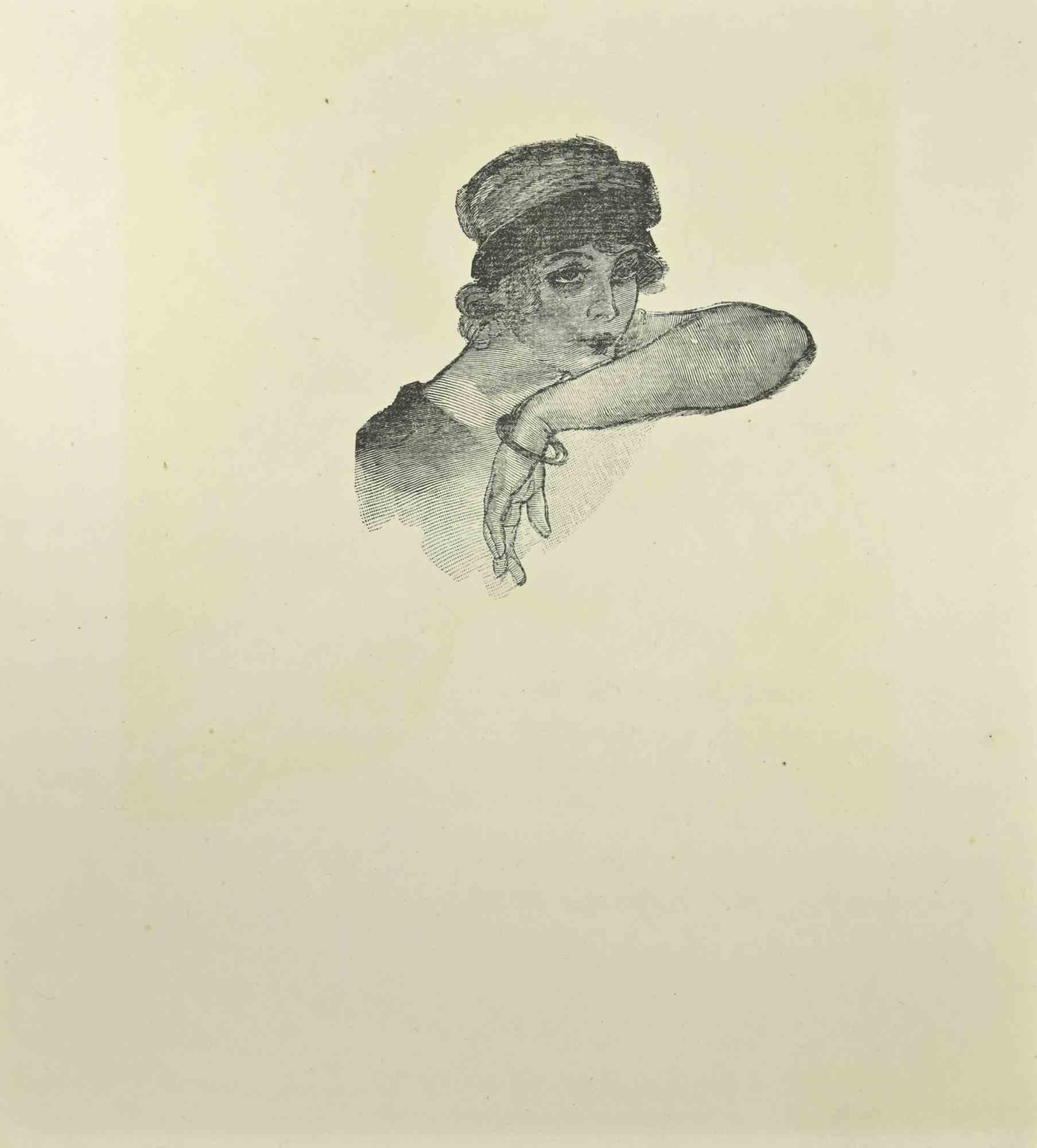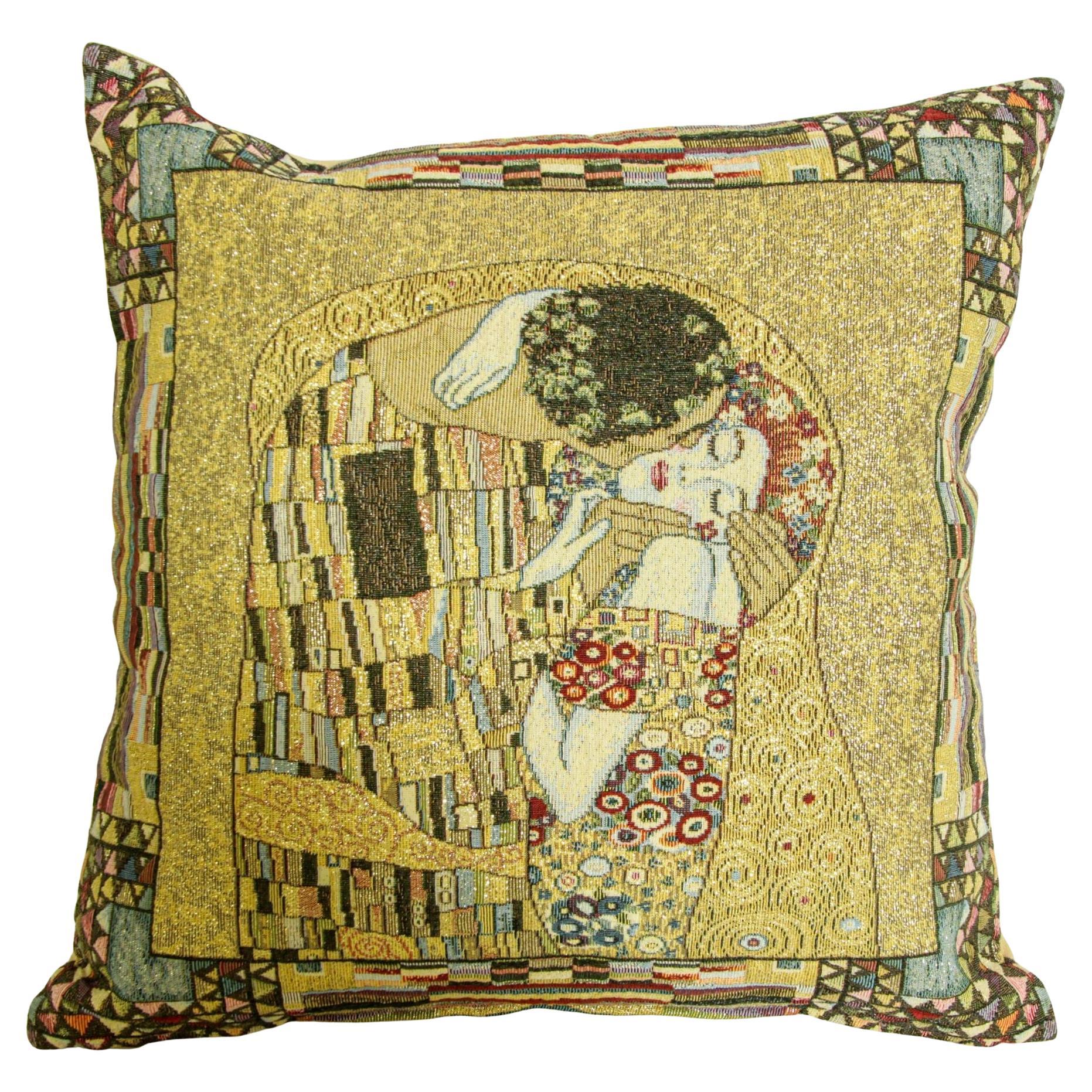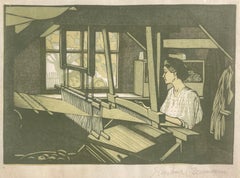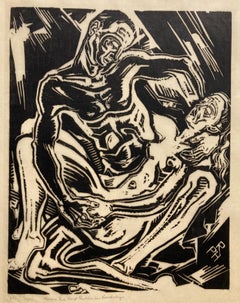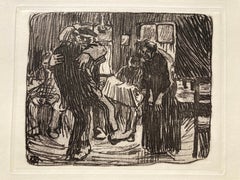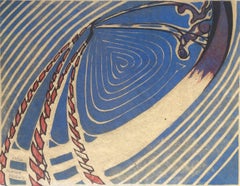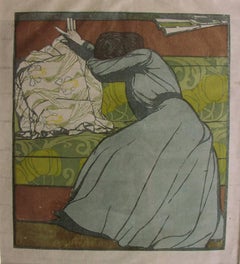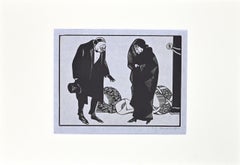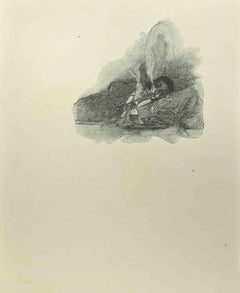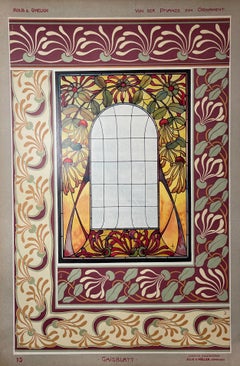Items Similar to POLSTER (The Cushion)
Want more images or videos?
Request additional images or videos from the seller
1 of 8
Max KurzweilPOLSTER (The Cushion)1903
1903
$1,800
$2,25020% Off
£1,399.04
£1,748.7920% Off
€1,584.09
€1,980.1120% Off
CA$2,571.86
CA$3,214.8220% Off
A$2,800.15
A$3,500.1820% Off
CHF 1,466.12
CHF 1,832.6520% Off
MX$33,611.04
MX$42,013.8020% Off
NOK 18,503.30
NOK 23,129.1220% Off
SEK 17,349.99
SEK 21,687.4920% Off
DKK 11,829.41
DKK 14,786.7720% Off
About the Item
MAXIMILLIAN KURZWEIL (Austrian 1867-1916)
DER POLSTER / THE CUSHION, 1903. Color woodcut printed on laid japon paper, affixed as usual to a support sheet from its upper sheet edge as published by “Gesellschaft für Verfielfaltigende Kunst, Vienna" with their printed information, artist name and original woodcut (in German) printed at the support sheet lower edge. The sheet of japon is in excellent condition, the colors fresh. Image size 11 1/4 x 10 1/4 inches, with full margins 15 ¼ x 12 inches and deckle edges. The large multicolored colored support sheet, 20 5/8 x 17 1/2 inches is in good condition aside from a small bit of residual tape in the margin.
Kurzweil was a painter as well as producing a small number of original woodcuts. Der Polster is his most sought after image.
- Creator:Max Kurzweil (1867-1916, Austrian)
- Creation Year:1903
- Dimensions:Height: 11.25 in (28.58 cm)Width: 10.25 in (26.04 cm)
- Medium:
- Movement & Style:
- Period:
- Condition:
- Gallery Location:Santa Monica, CA
- Reference Number:1stDibs: LU411312617132
About the Seller
5.0
Recognized Seller
These prestigious sellers are industry leaders and represent the highest echelon for item quality and design.
Platinum Seller
Premium sellers with a 4.7+ rating and 24-hour response times
Established in 1977
1stDibs seller since 2016
296 sales on 1stDibs
Typical response time: 1 hour
Associations
International Fine Print Dealers Association
- ShippingRetrieving quote...Shipping from: Santa Monica, CA
- Return Policy
More From This Seller
View AllTHE RUG WEAVER
By Gustave Baumann
Located in Santa Monica, CA
GUSTAVE BAUMANN (1881 – 1971)
THE RUG WEAVER, 1910 (Chamberlain 26)
Color woodcut signed in pencil. Unnumbed from an edition 100 as published in the Hills o’ Brown...
Category
1910s American Modern Figurative Prints
Materials
Woodcut
LOVERS (LIEBESPAAR
Located in Santa Monica, CA
ROBERT PHILIPPI (Austrian 1877-1959)
LIEBESPAAR (LOVERS) ca.1923 (in Rifkind Collection, LACMA: From a portfolio of 10 prints. Rifkind indicates the e...
Category
1920s Expressionist Figurative Prints
Materials
Woodcut
HAMBURGER KNIEPPE
By Käthe Kollwitz
Located in Santa Monica, CA
KATHE KOLLWITZ (1867-1945)
HAMBURGER KNIEPPE, 1901) (K.58 IIIb)
Soft Ground Etching, Plate 9 ¾ x 8 ¼ sheet 10 ½ x 13 ¾. With the von de Becke blind stamp in the lower right. Prin...
Category
Early 1900s Expressionist Interior Prints
Materials
Etching
SWING BOATS
By Claude Flight
Located in Santa Monica, CA
CLAUDE FLIGHT (1881 -1955)
SWING BOATS 1921 (Coppel CF5)
Color linocut, signed & no. 23/50, 8 5/8 x 11”. Sheet 10 x 13” on thin paper tipped to black-b...
Category
1920s Futurist Abstract Prints
Materials
Linocut
AGONY
Located in Santa Monica, CA
ROBERT PHILIPPI (Austrian 1877-1959)
KNEELING NUDE. c. 1923 (Chrastek, Widder 2019, p. 162, N° 461) (in Rifkind Collection, LACMA: From a portfolio of 1...
Category
1920s Expressionist Figurative Prints
Materials
Woodcut
$600 Sale Price
20% Off
LARGE RARE OTTO MUELLER WOODCUT POSTER
By Otto Mueller
Located in Santa Monica, CA
OTTO MUELLER (German 1874 – 1930)
POTSDAMER KUNSTSOMMER, 1921 (1968) (Karsch 6)
Woodcut. Edition of 25 and numbered 11. There are no known
impressio...
Category
1920s Expressionist Figurative Prints
Materials
Woodcut
You May Also Like
Der Polster
By Max Kurzweil
Located in New York, NY
Kurzweil, Maximilian. Der Polster, 1903. Color woodcut on japon. Included as an insert in Pan. Unsigned. Framed.11 1/4 x 10 1/4. 1
Ref: Hofstatter, p. 241; Pabst, p. 154.
Maximillian Kurzweil was the co-founder of the Vienna Secession in 1897 and editor and illustrator of the influential Secessionist magazine Ver Sacrum...
Category
Early 1900s Vienna Secession Figurative Prints
Materials
Lithograph
The Widow - Woodcut Print by Hermann-Paul - 1925
Located in Roma, IT
The Widow is an original Modern artwork realized by Hermann-Paul (Paris,1864 – 1940).
Original woodcut on paper.
Hand-signed in pencil on the lower right corner.
Passepartout is ...
Category
1920s Modern Figurative Prints
Materials
Woodcut
Woman - Woodcut after Jean Paul Sauget - 1921
Located in Roma, IT
Woman is a woodcut print print on paper, realized after Jean Paul Sauget for Maurice Magre's Les Soirs d'Opium.
Published in 1921.
Good conditions.
Category
1920s Modern Figurative Prints
Materials
Woodcut
Von Der Pflanze Zum Ornament
Located in Wilton, CT
30 plates of floral designs from the Jugendstil period
Category
Early 1900s Jugendstil Interior Prints
Materials
Lithograph
$2,000 Sale Price
20% Off
Woman - Woodcut after Jean Paul Sauget - 1921
Located in Roma, IT
Woman is a woodcut print print on paper, realized after Jean Paul Sauget for Maurice Magre's Les Soirs d'Opium.
Published in 1921.
Good conditions.
Category
1920s Modern Figurative Prints
Materials
Woodcut
GUSTAV KLIMT The Kiss Throw Pillow Cushion Decor
By (after) Gustav Klimt
Located in Moreno Valley, CA
The Kiss by GUSTAV KLIMT Throw Pillow Cushion Made in Belgium by Flemish Tapestries.
Elevate Your Home with Premium Luxury Tapestry Cushion Throw Pillow Made in Flanders, Belgium
Ind...
Category
Late 20th Century Belgian Post-Modern Pillows and Throws
Materials
Cotton
More Ways To Browse
Antique German Prints
Maria Izquierdo
Nicolas Cochin
Original Etching 16th Century
Paloma Picasso Print
Paris Gallery Poster
Picasso 1966
Picasso Bottle
Picasso Color Lithograph
Picasso Horse Art
Picasso Toro Y Toreros 1959
Pierre Auguste Renoir Le Chapeau Epingle
Pope Innocent
Renoir Chapeau Epingle
Robert Kasimir Etchings
Romare Bearden Jazz Series
Roy Lichtenstein Signed Lithograph
Salvador Dali Paradise
